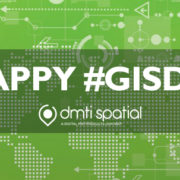3 Location Tools Every Digital Marketer Should Be Using
Even the most skilled digital marketers tend to struggle in one key area: knowing what their customers are doing offline, and how to use those offline behaviours to develop effective marketing strategies. Offline behaviours are the marketing touchpoints that consumers don’t actually physically engage with, such as seeing an advertisement on TV or a sign in a window when walking past a store.
Location technology offers unique insights into the complex customer journey. Customers do not operate in silos, and marketing shouldn’t either. A buyer has multiple potential touchpoints, and effective marketing requires understanding online and offline behaviours in order to optimize strategies. Marketers using location tools are able to view data on how customers react to various forms of marketing based on their physical locations. By tracking certain customer behaviours, marketers gain the ability to offer stronger and more effective experiences for customers.
Whether customers are shopping online or in a brick-and-mortar store, here are the top 3 location intelligence tools digital marketers should be using to develop a strong end-to-end customer journey.
1. Geotargeting
What is Geotargeting?
Geotargeting is a location intelligence tool used to deliver the most relevant content to people based on their location.
Even the most skilled digital marketers tend to struggle in one key area: knowing what their customers are doing offline, and how to use those offline behaviours to develop effective marketing strategies. Offline behaviours are the marketing touchpoints that consumers don’t actually physically engage with, such as seeing an advertisement on TV or a sign in a window when walking past a store.
How to Use Geotargeting
Geotargeting is effective because it allows you to create marketing strategies that connect with customers on their terms. You get the big picture view of customer locations so that you can communicate in a way that is personal and meaningful. This includes mobile notifications, targeted digital ads, email and much more. Geotargeting allows you to get very specific about who you are marketing to, and how location could play into purchasing decisions. Using geotargeting over a period of time allows you to gather data on customer behaviours for a deeper contextual understanding of what sort of messaging is most effective.
2. Geofencing
What is Geofencing?
Marketers use GPS or radio frequency (RFID) to designate a virtual geographic boundary. The system is triggered in real time when customers enter or leave the ‘fence.’ This allows marketers to send alerts or notifications to encourage consumer engagement.
How to Use Geofencing
Geofencing allows you to engage with customers in powerful ways. When customers enter or leave the virtual fence, you can send very specific content to help them take a certain action. For example, you can set a fence for 2 miles from your store. If a customer enters the fence, they get an alert about a special deal or event happening at that moment. You can also set up a geofence around a competitor’s business, triggering a notification when your customers visit competitors with a compelling offer that could inspire them to visit you instead. Geofencing could also offer helpful insights by showing how often customers are in your fence, or whether they are inspired to visit your store when offered certain incentives.
3. Geofilters
What are Geofilters?
Geofilters are location-based screens that can be used on social media, and are only accessible when users are in a specific location.
How to Use Geofilters
Geofilters are a fun and unique way to connect with consumers. They are also a great way to have consumers promote your brand for you. You can create a filter consumers can use when they visit you. Alternately, you can allow users to personalize geofilters in your designated space and encourage them to share it on social media. You can even set up a geofilter in or near a competitor’s location to drive customer interest back to you.
Use Location Intelligence in Your Digital Marketing Strategies!
Geotargeting, geofencing, and geofilters are all powerful ways for digital marketers to better understand consumer behaviour. These tools offer location-based insights that help marketers refine messaging, and to develop streamlined customer experiences.
DMTI’s CanMap Address Data and Location Hub Visualization & Web Services deliver the tools can be used to support digital marketing strategies. DMTI is continually updating and cleansing data to deliver accurate and reliable location information. Marketing teams using DMTI’s unparalleled location data consistently outpace their competition. When using any location tools to market your product or service, DMTI offers the most complete and accurate Canadian data and software services.
Click here to contact a DMTI specialist, and get information on how you can leverage location intelligence to optimize digital marketing campaigns.
Additional Reading:




